Korea's Independence Gate
In Seodaemun District
!['Dongnimmun' [독립문] Independence Park in Seodaemun District, Seoul independence park gate view](https://www.koreattrack.com/images/xfreedom-park-independence-gate-view.jpeg.pagespeed.ic.BVLtdxjRc7.jpg) 'Dongnimmun' [독립문] Independence Gate in Seodaemun District, Seoul
'Dongnimmun' [독립문] Independence Gate in Seodaemun District, SeoulIndependence Gate in Seodaemun
Dongnimmun Gate, also known as the "Independence Gate," is a significant memorial in Seoul, South Korea.
This iconic structure symbolizes the country's struggle for independence and rich cultural heritage. Built in 1897, the gate was the main entrance to the city during the Joseon Dynasty.
It symbolized power and authority, welcoming important guests and protecting the city from invaders.
Today, it is a popular tourist attraction and a must-visit destination for anyone interested in Korean history and culture.
Let me share some fascinating details about this historical landmark and discover what makes it unique.
Location & Purpose
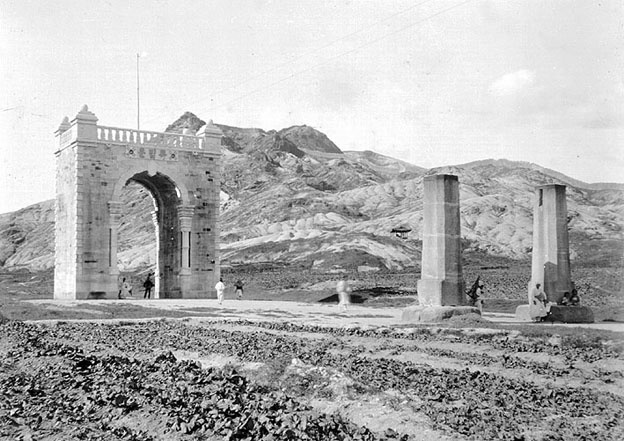 An old photo of Dongnimmun or Independence Gate in Sodaemmun District, Seoul. [quora]
An old photo of Dongnimmun or Independence Gate in Sodaemmun District, Seoul. [quora]This fascinating gate awaits your exploration in the southeastern corner of Seodaemun Independence Park. Formerly known as Yeongeunmun ("welcome obligation gate"), it has a rich history that dates back to the Joseon Dynasty.
In the past, it was a crucial reception point for foreign envoys, including Chinese diplomats, who visited Korea to receive tribute from the monarchs.
Yeongeunmun was not completely torn down or destroyed when it was replaced with the new Independence Gate. The two pillars are still standing there.
Some say that Yeongeunmun was destroyed during the Japanese invasions in the 16th century.
Perhaps the intention was to leave it as a reminder of where they came from and how they progressed.
Features of the Independence Gate or Dongnimmun
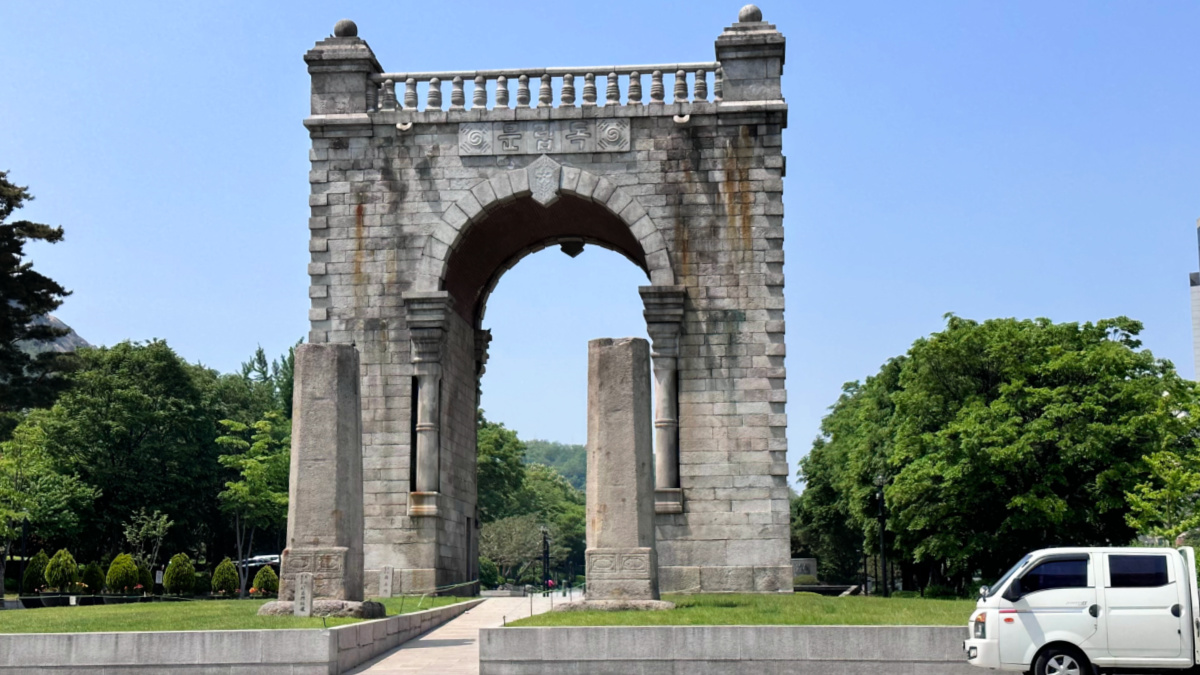 Independence Gate in Seodaemun District, Seoul.
Independence Gate in Seodaemun District, Seoul.In contrast, the Independence Gate was built following Western styles, this time to represent Korea's emergence in the (then) modern world.
The present Independence Gate somewhat resembles the Triumphal Arch in Paris. Later on, the pillars of the old gate were removed.
Today, the gate is a testament to Korea's cultural heritage and a must-visit spot for history buffs and tourists like you.
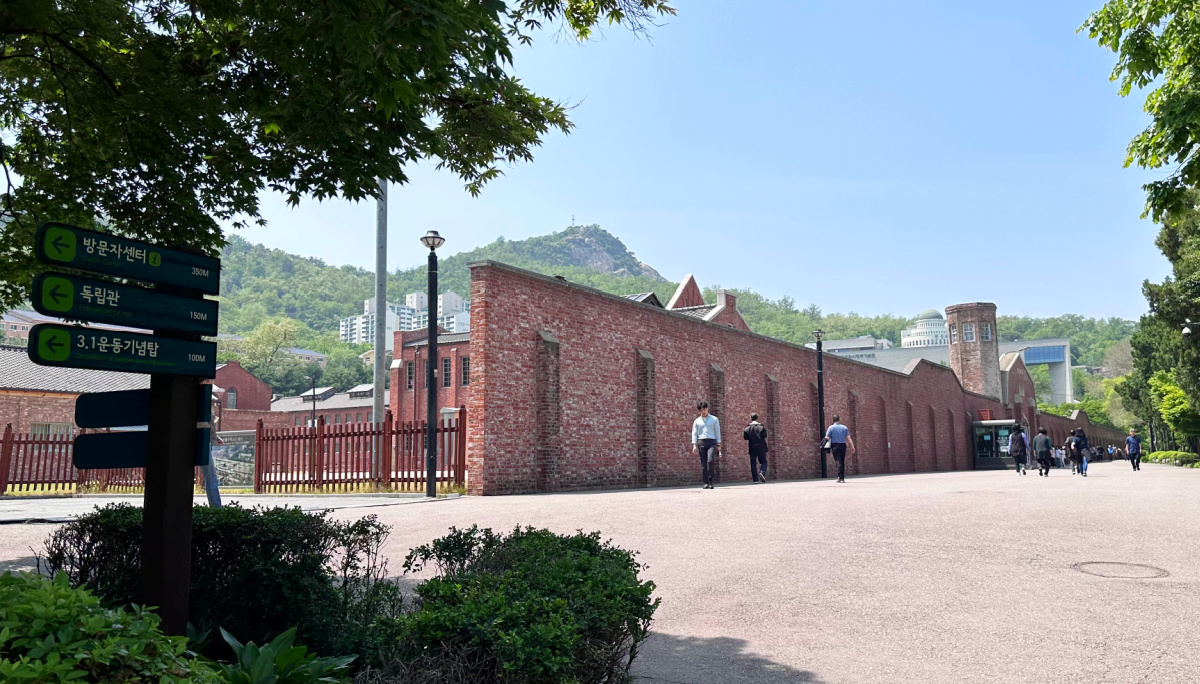 Seodaemun Prison History Hall, Seodaemun District, Seoul, South Korea.
Seodaemun Prison History Hall, Seodaemun District, Seoul, South Korea.It is located near the Seodaemun Prison History Hall, where you can learn more about Korea's struggle for independence and the role of Seodaemun Prison in the country's history.
It is your chance to explore this remarkable gate and immerse yourself in Korea's vibrant past.
Historical Context & Construction
During the late 1800s, Korea, then known as Joseon, was experiencing political turmoil.
The Gabo Reform movement (1894–1896) sought to bring about internal changes to the government, but its efforts were met with foreign intervention.
After the First Sino-Japanese War (1894–1895), in which the Qing Dynasty Chinese army defeated the Meiji Japanese army, Korea desired a new symbolic monument representing its unwavering determination for independence.
On November 21, 1896, construction began on Dongnimmun Gate, also known as Independence Gate, to symbolize Korea's quest for independence.
The design of the gate was inspired by the Arc de Triomphe in Paris, France, and was created by architect Sim Uiseok with input from activists of the Independence Club, led by Seo Jaepil.
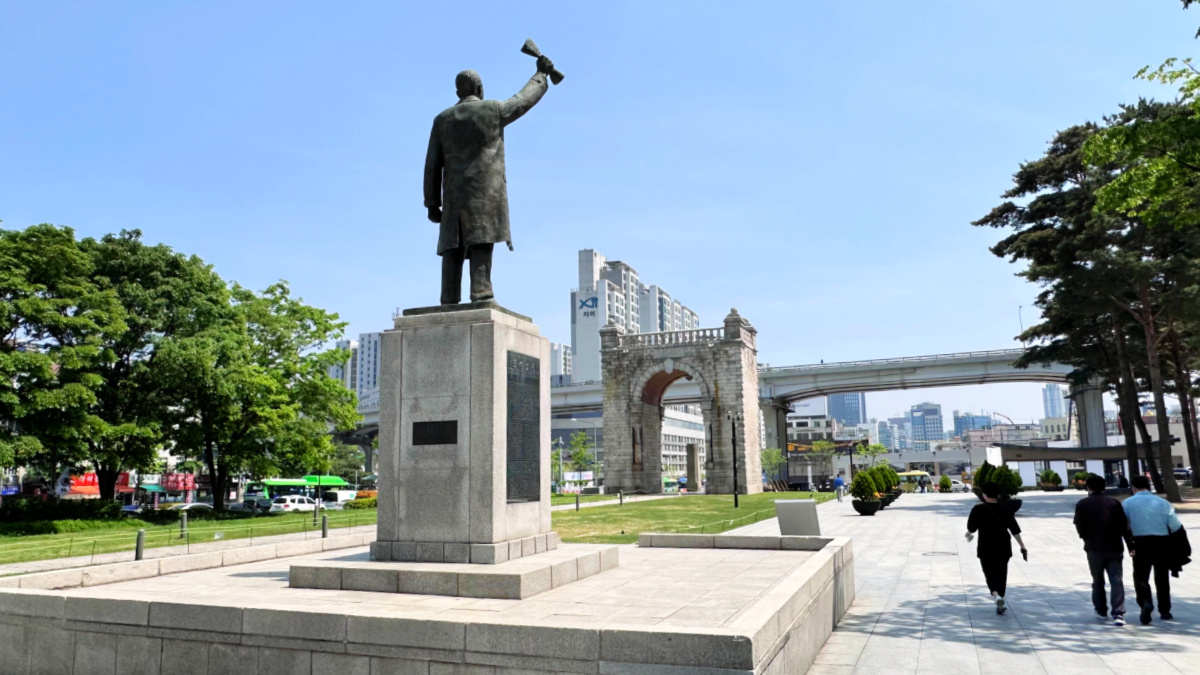 Independence Park in Seodaemun District, Seoul
Independence Park in Seodaemun District, Seoul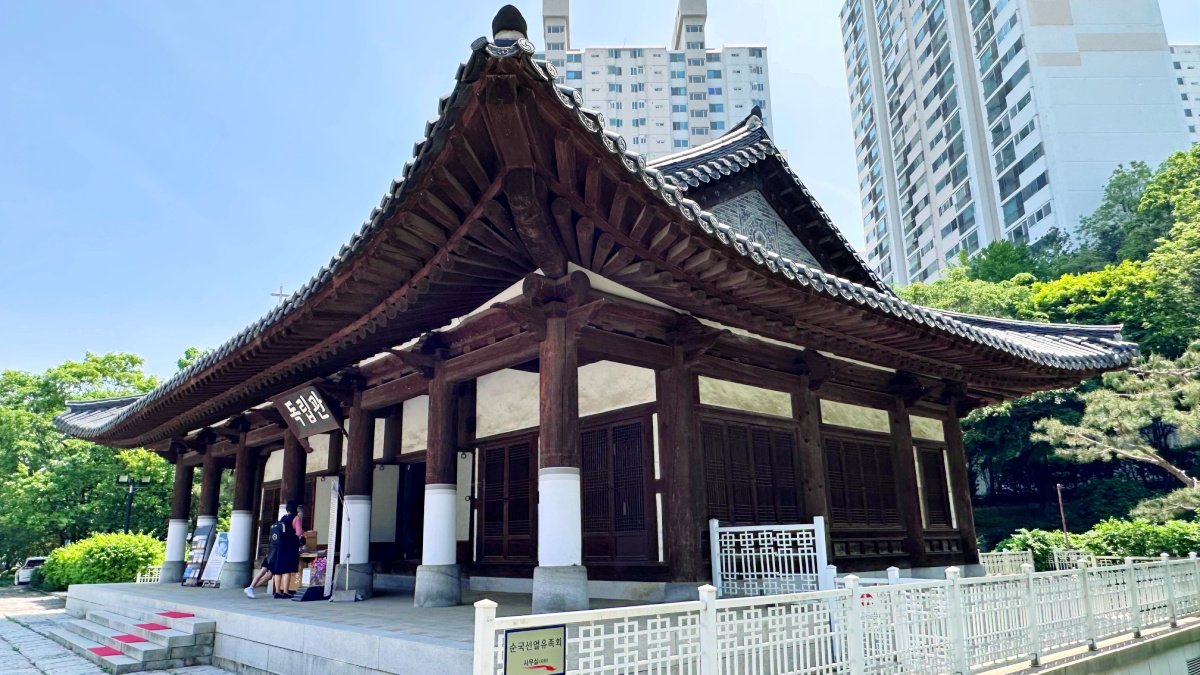 Independence Park's Independence Hall in Seodaemun District, Seoul
Independence Park's Independence Hall in Seodaemun District, SeoulThe structure is adorned with intricate carvings and inscriptions depicting Korea's history and struggle for independence.
The magnificent Dongnimmun Gate is a true marvel of architecture. Made entirely of granite, it stands tall at an impressive 14.28 meters (46 feet) while spanning a width of 11.48 meters (37 feet).
The gate's rainbow-shaped passageway welcomes visitors with open arms, beckoning them to explore further.
For those who wish to ascend to the top, a sturdy stone staircase on the left side provides a safe and convenient passage.
Originally located 70 meters (229 feet) southeast of its current location, the Dongnimmun Gate was restored and relocated in 1979, where it stands today as a true testament to Korea's commitment to independence.
The gate's plaque, featuring plum blossoms, is a poignant symbol of the Great Han Empire, representing the nation's rich history and culture.
The Dongnimmun Gate is not just a physical structure but also a symbol of the Korean people's resilience and ongoing fight against foreign intervention.
It reminds us that true freedom cannot be achieved through mere willpower alone but requires a steadfast and unwavering commitment to independence.
Today, Dongnimmun Gate symbolizes Korea's determination for independence and is a popular tourist destination in Seoul.
If you plan to visit Dongnimmun Gate, remember that it's open 24 hours a day, and admission is free.
Getting to Dongnimmun Gate in Seodaemun
Take Subway Line 3 to Dongnimmun Station (Exit 4) and walk about 270 meters. It is the main gate to the Independence Park in Seodaemun.
If you're in Seoul, consider visiting this historic gate and reflecting on the struggles and triumphs of Korea's independence journey.
Thanks so much for reading. If you have any comments or thoughts, please leave them below in the comments section. 🇰🇷🌟
- Home
- Historical Attractions
- Independence Gate In Sodaemun
Get Exciting Activities
Book one of our exciting activities today to experience the thrill of a lifetime! Take advantage of this opportunity and secure your spot in advance.
Hotel Map Guide
Find your affordable, accessible, and comfortable hotel in Seoul at Agoda.Com. See the hotel map below...
Hotel Booking Guide
Find affordable and amazing hotels on Agoda.com using the search box below. Book now to enjoy great discounts and save!
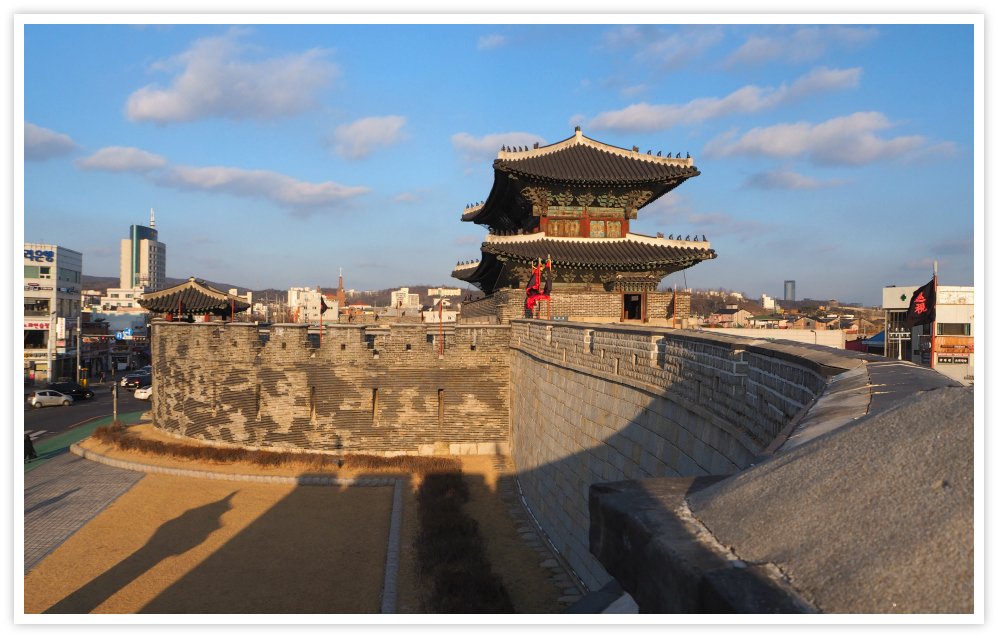
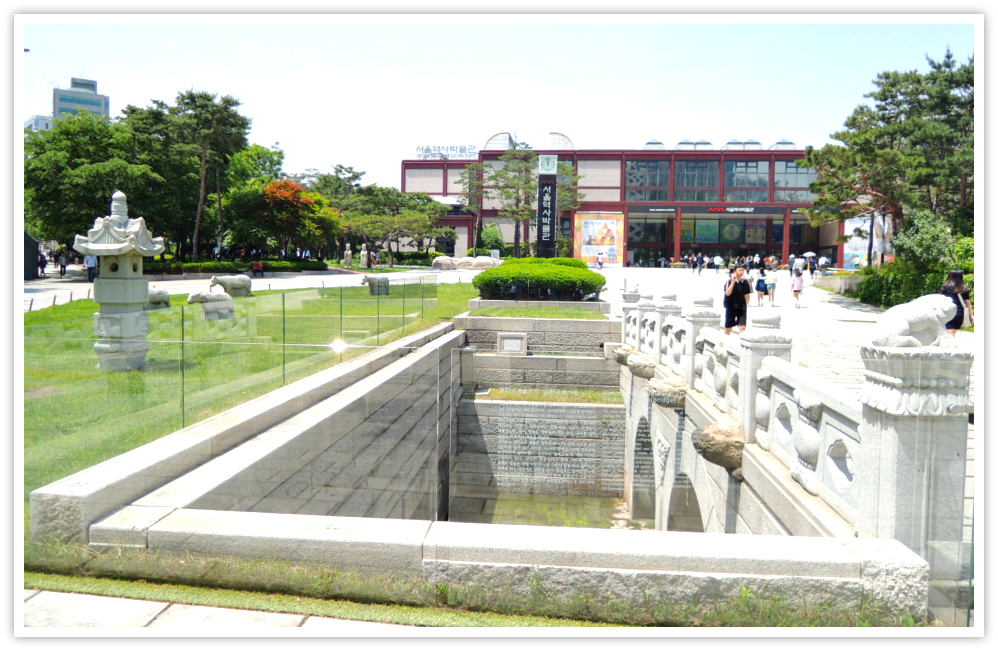
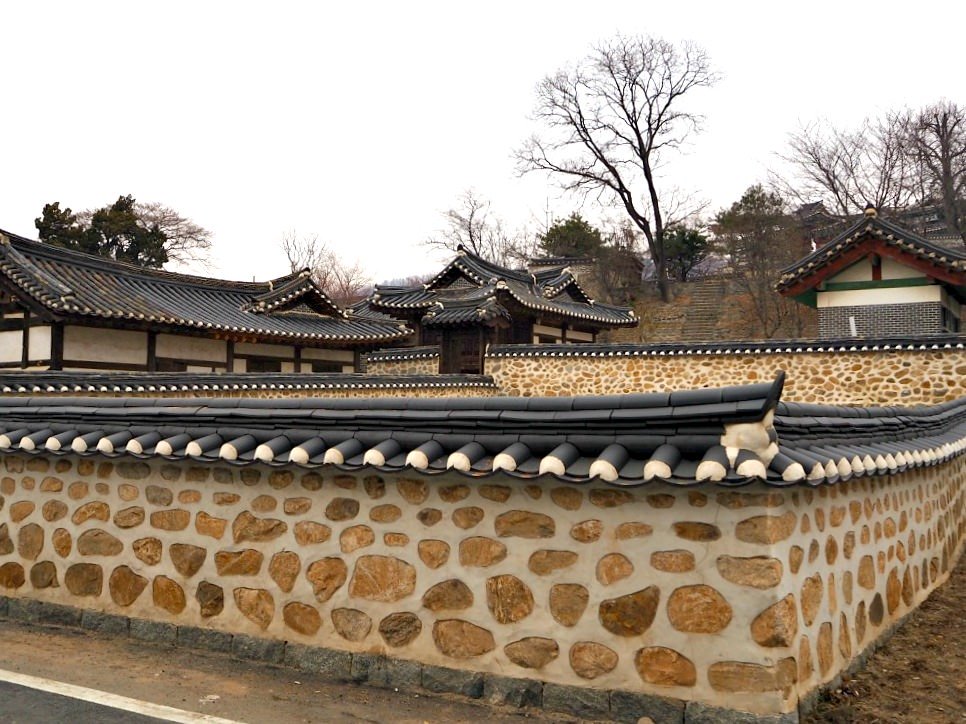




New! Comments
What do you think about this page? Leave me a comment in the box below.